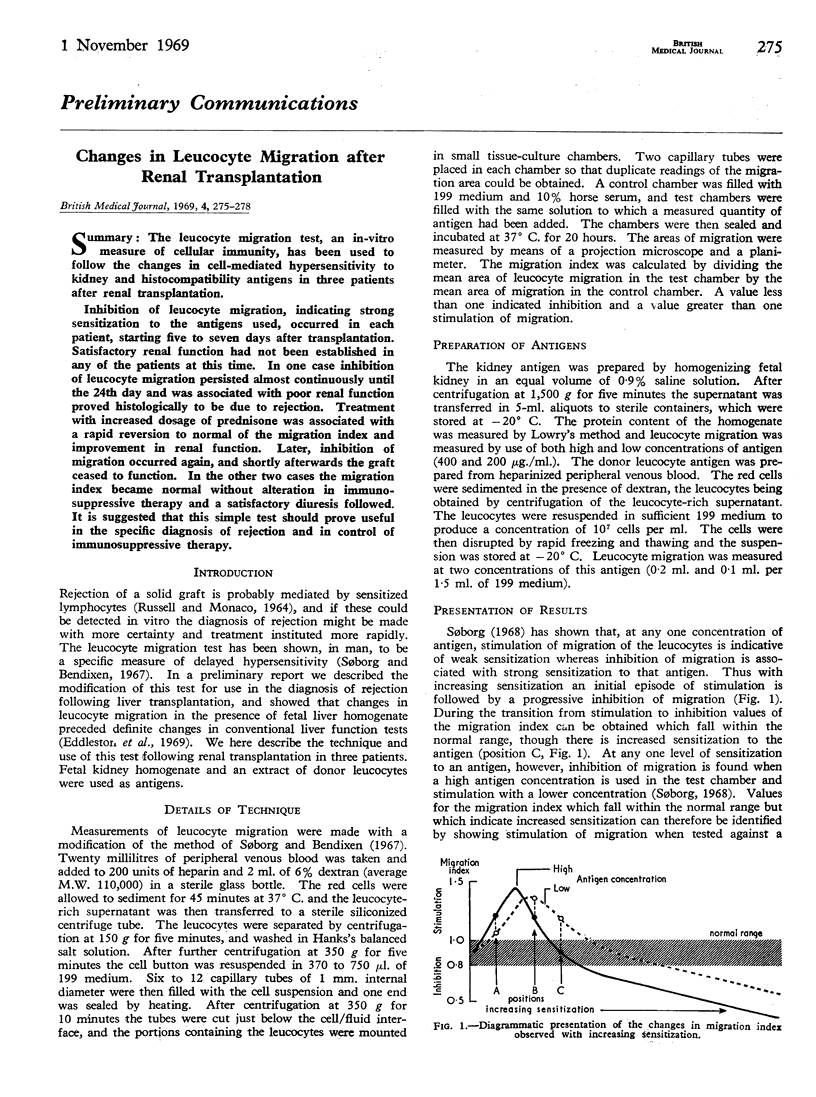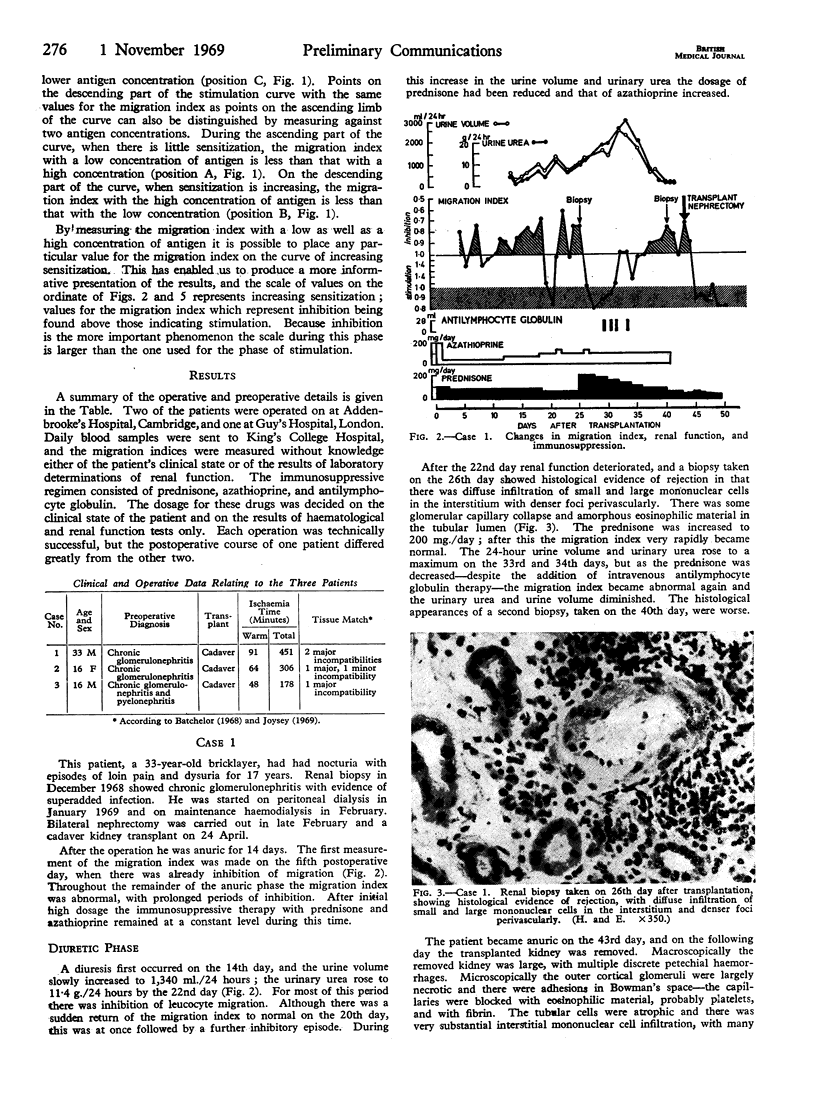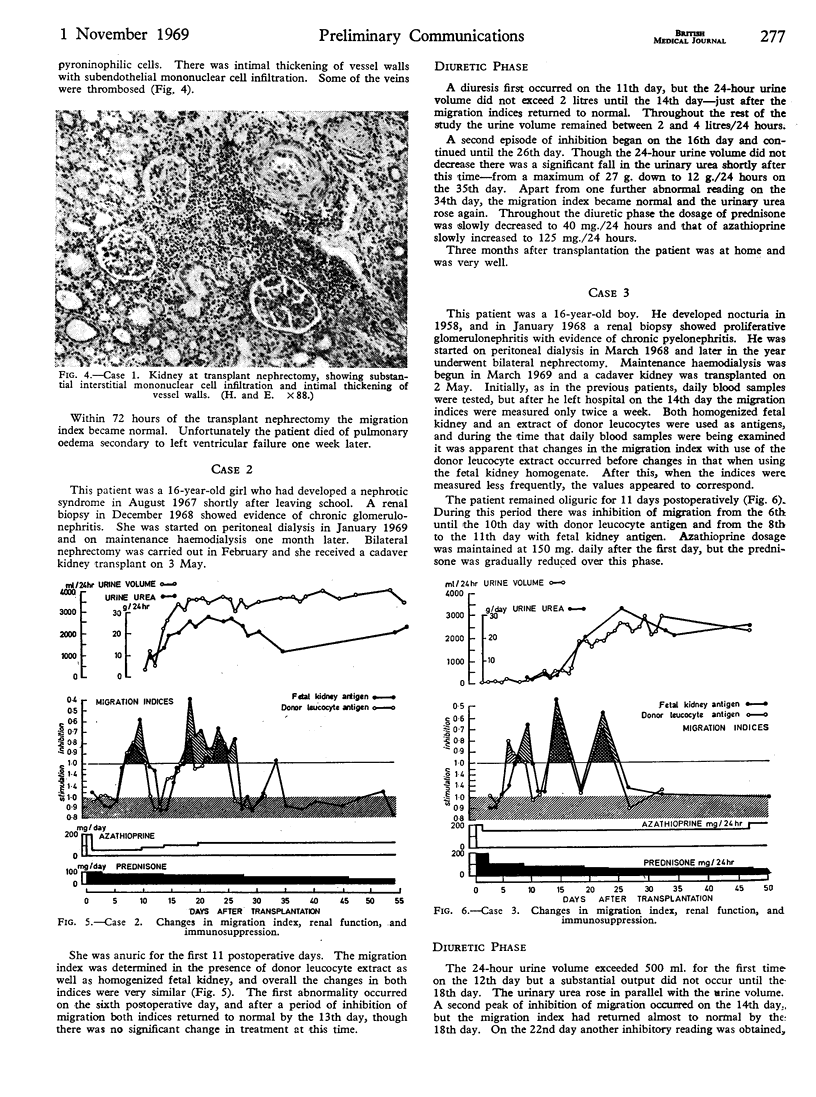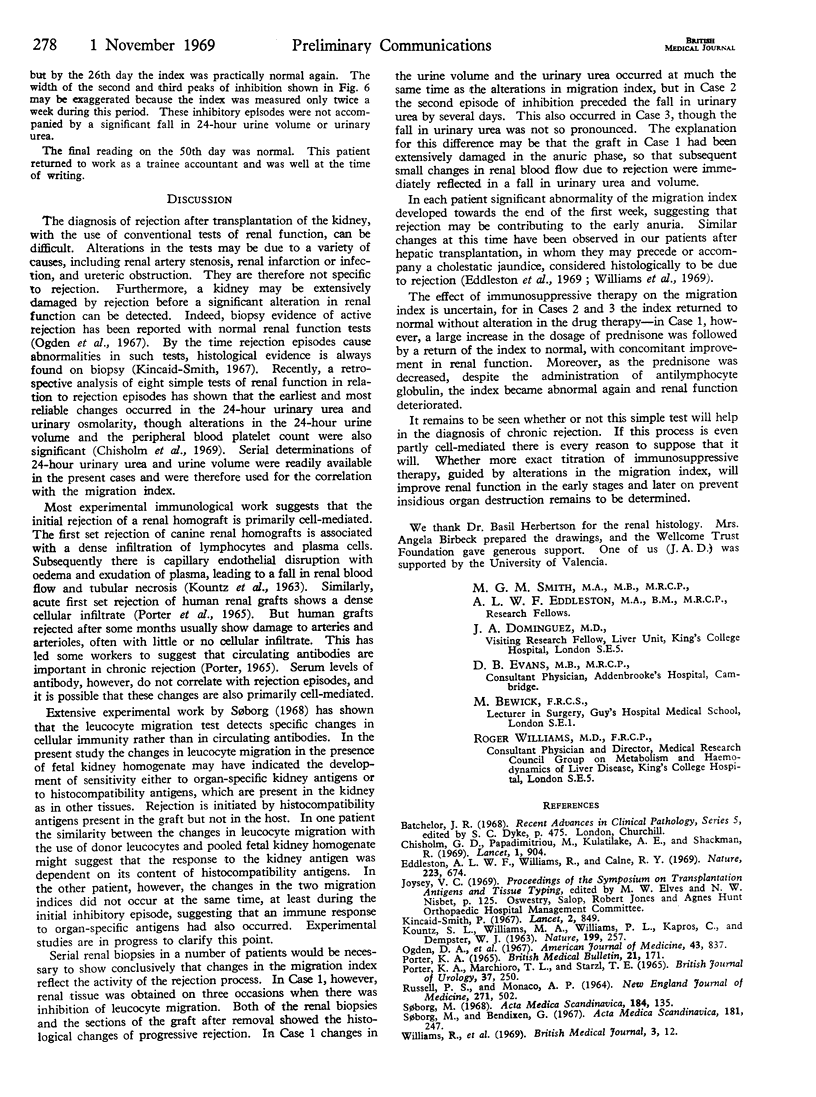Abstract
The leucocyte migration test, an in-vitro measure of cellular immunity, has been used to follow the changes in cell-mediated hypersensitivity to kidney and histocompatibility antigens in three patients after renal transplantation.
Inhibition of leucocyte migration, indicating strong sensitization to the antigens used, occurred in each patient, starting five to seven days after transplantation. Satisfactory renal function had not been established in any of the patients at this time. In one case inhibition of leucocyte migration persisted almost continuously until the 24th day and was associated with poor renal function proved histologically to be due to rejection. Treatment with increased dosage of prednisone was associated with a rapid reversion to normal of the migration index and improvement in renal function. Later, inhibition of migration occurred again, and shortly afterwards the graft ceased to function. In the other two cases the migration index became normal without alteration in immunosuppressive therapy and a satisfactory diuresis followed. It is suggested that this simple test should prove useful in the specific diagnosis of rejection and in control of immunosuppressive therapy.
Full text
PDF



Images in this article
Selected References
These references are in PubMed. This may not be the complete list of references from this article.
- Chisholm G. D., Papadimitriou M., Kulatilake A. E., Shackman R. The diagnosis of rejection of renal allotransplants in man. Lancet. 1969 May 3;1(7601):904–906. doi: 10.1016/s0140-6736(69)92543-4. [DOI] [PubMed] [Google Scholar]
- Eddleston A. L., Williams R., Calne R. Y. Cellular immune response during rejection of a liver transplant in man. Nature. 1969 May 17;222(5194):674–675. doi: 10.1038/222674a0. [DOI] [PubMed] [Google Scholar]
- KOUNTZ S. L., WILLIAMS M. A., WILLIAMS P. L., KAPROS C., DEMPSTER W. J. MECHANISM OF REJECTION OF HOMOTRANSPLANTED KIDNEYS. Nature. 1963 Jul 20;199:257–260. doi: 10.1038/199257a0. [DOI] [PubMed] [Google Scholar]
- Kincaid-Smith P. Histological diagnosis of rejection of renal homografts in man. Lancet. 1967 Oct 21;2(7521):849–852. doi: 10.1016/s0140-6736(67)92589-5. [DOI] [PubMed] [Google Scholar]
- Ogden D. A., Porter K. A., Terasaki P. I., Marchioro T. L., Holmes J. H., Starzl T. E. Chronic renal homograft function: correlation with histology and lymphocyte antigen matching. Am J Med. 1967 Dec;43(6):837–845. doi: 10.1016/0002-9343(67)90242-2. [DOI] [PMC free article] [PubMed] [Google Scholar]
- PORTER K. A., MARCHIORO T. L., STARZL T. E. PATHOLOGICAL CHANGES IN 37 HUMAN RENAL HOMOTRANSPLANTS TREATED WITH IMMUNOSUPPRESSIVE DRUGS. Br J Urol. 1965 Jun;37:250–273. doi: 10.1111/j.1464-410x.1965.tb09598.x. [DOI] [PubMed] [Google Scholar]
- PORTER K. A. MORPHOLOGICAL ASPECTS OF RENAL HOMOGRAFT REJECTION. Br Med Bull. 1965 May;21:171–175. doi: 10.1093/oxfordjournals.bmb.a070388. [DOI] [PubMed] [Google Scholar]
- RUSSELL P. S., MONACO A. P. THE BIOLOGY OF TISSUE TRANSPLANTATION. N Engl J Med. 1964 Sep 3;271:502–CONTD. doi: 10.1056/NEJM196409032711007. [DOI] [PubMed] [Google Scholar]
- Soborg M., Bendixen G. Human lymphocyte migration as a parameter of hypersensitivity. Acta Med Scand. 1967 Feb;181(2):247–256. doi: 10.1111/j.0954-6820.1967.tb07255.x. [DOI] [PubMed] [Google Scholar]
- Soborg M. In citro migration of peripheral human leucocytes in cellular hypersensitivity. Acta Med Scand. 1968 Jul-Aug;184(1-2):135–139. [PubMed] [Google Scholar]
- Williams R., Calne R. Y., Ansell I. D., Ashby B. S., Cullum P. A., Dawson J. L., Eddleston A. L., Evans D. B., Flute P. T., Herbertson P. M. Liver transplantation in man--3, Studies of liver function, histology, and immunosuppressive therapy. Br Med J. 1969 Jul 5;3(5661):12–19. doi: 10.1136/bmj.3.5661.12. [DOI] [PMC free article] [PubMed] [Google Scholar]




